Black Shedding(s)







JUNE 5 - JULY 10, 2024
“I have lived many lives inside this body.
I lived many lives before they put me in this body.
I will live many lives when they take me out of it.”
- Akwaeke Emezi (excerpt from Freshwater)
Black Shedding(s) is a group exhibition that came into cultivation during the gathering, processing, and embodying of what it takes to shed a world that can no longer be. Black Shedding(s) is a statement, showcasing the processes and experiences when in search of creating new worlds. Each Artist’s work is a reflection of the shedding process for liberatory transformation, centering the history of the lands we call home and the imagination for what is already here. Black Shedding(s) is a look at what exists inside the portal of transformation. Through visual art, sound production, literary reflections, and educational resources, we invite the viewer into their own contemplation and conversation toward transformation.
When entering the space, a viewer is met with the work of Mikailah, whose intricate beadwork displays her signature style of beading contemporary Nimîipuu Nation influenced work. Mikailah is an Afro-Indigenous beadwork artist from the Nimîipuu Nation who learned the art of beading from her grandmother, Chloe Halfmoon. Mikailah’s Nimîipuu wall canvas intentionally uses seed beads and
brass throughout the two-needle stitch. The viewer is looking at a traditional old-style color scheme commonly found within the tribe and a geometric pattern, allowing for the artwork to speak to its own transformation. Black Shedding(s) starts its journey with Mikailah’s work as a grounding intention, understanding that to shed one must know what and who they are rooted in to know what needs to be transformed. The history of Black Indigenous people in the United States is a sacred history that holds culture, values, and traditions in its art practices. Mikailah’s work starts the intention for the viewer to question themselves: who are you? What are you rooted in?
The viewer then moves to Nikesha Breeze, where we see her work Land Effigy, a sculpture built on-site using soil, cotton, flowers, willow branches, and more, with the intention of serving “as a guardian of Black, Indigenous, Queer, and Earth bodies. Each one is constructed and initiated as a site-specific installation utilizing local plants and earth medicines. The Land Effigy becomes a grounding force for the work in the exhibit, utilizing the spirits of each plant to create both a field of protection and a conduit for the various energies that arise in the space.” In many Black, Indigenous, Queer, and Earth traditions, guardians are required to start any journey. They are there to guide as well as to ground.
The curation of Black Shedding(s) was developed to tell a story, not linear by any means, but a story that is fluid like most are. When the viewer enters the middle of the gallery on one wall they will find Justice, the sculpture work of tasha dougé. The middle of the gallery seeks to showcase the answers to: What is the history of this land screaming for colonizers to be held accountable for? What are Black people shedding? Who are Black people becoming? Who have we always been? “Justice” is a sculpture that was reborn in 2024, as this is the second edition that is being revealed for the Black Shedding(s) exhibition. Emphasizing the complexities of the land, dougé uses recycled fencing material, cotton, and rebundled braiding hair to
make Justice. As she puts it in her longer statement “this piece serves as a reminder that the United States of America is what it is because of the contribution made by people of African descent. This country was built off the backs and labor of enslaved Africans. It was our blood, sweat, and tears that cultivated the soil of this rich land.”
On the opposite wall the viewer will see the work of Gouled Ahmed. Their ongoing self-portrait series Our Earth Will Remember Us Again Someday explores the gaps that exist within formal language in the understanding and contextualization of gender expressions that exist outside of the binary. In Black and White portraits printed on paper, the artist highlights intricately textured garments from the Horn of Africa, and mixes contemporary and traditional materials to discuss the notion of futurity. Ahmed shares “I reflect on the unavailability of language to describe my gender non-conformity in both Somali and Amharic today. How I’m reduced to English to convey my sentiments, how so much is lost because of that.” The story of Black Shedding(s) at this point in the exhibit is meant to discuss the depth of a shedding process, where the viewer digests what was and is, and envisions what is to come. Ahmed leaves us with the question “what would it mean for gender non-conformity not to have to be oriented toward transition (always having to go somewhere else, become something else, move on) but already as a legitimate (non-)destination?”.
The work of Ahmed and dougé, the fullness of what they are sharing individually and in conversation with each other, is held in the center by an altar that was designed by Ehime Ora. With huge glasses of water, pillows, sacred medicine, and a bench, the viewer is able to take a break in the center. It is the guide and the grounding that from the beginning we said would be there. Ehime Ora designed this altar with the intention of reflecting in mind. Ora is grounded in her purpose of reconnecting others back to themselves as an educator of African Spirituality and holistic wellness. Through her creations, she facilitates tangible joy and spiritual wellbeing within her communities.
Ehime Ora is titled as Iyanifa (Ifa High Priestess), Iya Sango (Sango Priestess), and Iya Erinle (Erinle Priestess).
The final room in this shedding journey is designed as a place of home and remembrance. The work of Jaleeca Yancy, whose Pigment Series began with a few key concepts: black hands meet textiles; upcycling found fabrics; and the ancestral influence of indigo. The curation of this work is meant to display a living memory of the usage, practice, and history of upcycled fabrics and indigo amongst Black diaspora people. Yancy hand-dyed upcycled raw canvases with ethically-sourced, Moroccan indigo and saffron. The dyes mirror the vibrant resilience of the black diaspora; the found fabrics speak to sustainability, which is the story of human innovation itself. Next to Yancy’s work is the final work of Nikesha Breeze. This highlight brings together all that this exhibition speaks to, showcasing the faces of Black people who are often forgotten, but whom we lift up and remember. The limited 80 masks of her first edition series of the 108 Death Masks forms a large-scale ceramic installation centered on the living experience of shared wounds. Breeze shares that she “created 108 life-sized, hand-carved ceramic Death Masks as a ritual prayer for my lost and unknown ancestors. 108 is understood as a sacred number of endlessness and prayer. The number was used in this work to represent the endlessness of suffering in communities of color due to systematic racial violence, oppression, and white supremacy. Simultaneously, it represents the endless capacity of prayer and conscious care to move backwards and forwards in time.” The masks are displayed for the viewer to both look directly at, as well as be in communion with if turned around. When turned around the viewer and the masks will be looking at Breeze’s complimenting video, RE: TURN | RE: MEMBER. The video is a segment of Stages of Tectonic Blackness, an eight-hour durational performance and ritualized, elongated mourning dance for Black bodies and Earth bodies. As this piece asks the audience to move more slowly, there is a couch in the center of the room as another place for someone to rest. As curator, I
decided for this room to be designed as a home to be quite literal of where the reality of the pandemic required us to do this work, in our homes.
Black Shedding(s) can be discussed alongside the works of: shedding light on/in, rebirth, infusion, transmutation, the science of chrysalis, to shed free from..., and snake medicine used in various different ways within various different spiritual traditions. It can be discussed amongst those of us who know that antiracist, anticapitalist, anticolonial Black queer communal practice takes a communal shedding.
A shedding is different from a cleanse: a shedding is a transformation.

Cheyenne Wyzzard-Jones situates themselves in the world as a Black, Indigenous, and Queer curator, writer, and educator. They develop and share stories that are deeply grounded in and informed by Black, Indigenous, and Queer histories and technologies that disrupt white dominant concepts of time, gender, borders, and extreme systems of punishment that have altered a natural order. Cheyenne was the Founder and Director of Arts Programming for the influential organization, In Solidarity, from 2015-2023. In Solidarity was a fiscal sponsored organization that centered the lived experiences, joys, and key issues of Queer and Trans Black, Indigenous, and Brown peoples through healing arts, educational access, and connecting existing communities within collective struggles.
As an independent curator, Cheyenne leads the work of contemporary art curation and exhibition for the company Spiritual is Political. Their curation exists as a storytelling method putting puzzle pieces together through different interdisciplinary mediums to tell a collective story. Cheyenne showcases the work of Black, Indigenous, and Queer contemporary artists whose values in art making and art practice are aligned with the mission of Spiritual is Political.
Opening Reception
Wednesday, June 5, 2024, 6:00 PM - 8:00 PM
Public Program
Wednesday, June 26, 2024, 6:00 PM - 8:00 PM
Closing Reception
Wednesday, July 10, 2024, 6:00 PM - 8:00 PM
Longwood Art Gallery @ Hostos 450 Grand Concourse at 149th St., Room C-190 Bronx, New York 10451 (718) 518-6728 longwood@bronxarts.org
The Longwood Arts Project is the contemporary visual arts program of the Bronx Council on the Arts, with the mission to support artists and their work, especially emerging artists from underrepresented groups, such as people of color, the LGBTQ+ community, and women. The Longwood Art Gallery @ Hostos presents solo and group exhibitions of works of art produced in various media, through interdisciplinary practices that connect emerging artists, communities, and ideas within and beyond The Bronx.
Founded by visionary community leaders in 1962, the Bronx Council on the Arts (BCA) is a pioneer in advancing cultural equity in The Bronx. From our early beginnings as a presenter of affordable arts programming in select Bronx neighborhoods, we have grown into a cultural hub that serves the entire creative ecosystem of the borough. Our programs serve artists, the public, and the field at large by building connections, providing resources, and advocating for equitable practices. Then as of now, we focus on supporting the work of underrepresented groups – especially artists of color, women, and members of the LGBTQ+ community. Through this lens, we offer affordable programs for seniors and youth and provide direct services to over 1,500 artists and 250 community-based arts groups each year.
www.bronxarts.org
Named “the powerful locus for Latino art” by the New York Times, the Hostos Center serves the cultural needs of South Bronx residents and neighboring communities. As a leader in Latinx and African-based programming, the Center creates performing and visual arts forums in which the diverse cultural heritages of its audiences are celebrated and nurtured. The Hostos Center consists of two state-of-the art theaters of 900 and 367 seats each, an experimental Black Box theater and a museum-grade art gallery. Hostos Center events are sponsored by the Hostos Community College Foundation with funds from the New York City Department of Cultural Affairs in partnership with the City Council, the New York State Council on the Arts, the Howard Gilman Foundation, the National Endowment for the Arts, and the Office of NYC Councilmember Rafael Salamanca, Jr. www.hostoscenter.org
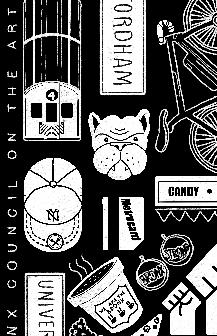
Longwood’s Youth Arts Engagement Program, launched in 2018, is designed to engage Bronx youth with the rich visual arts scene that surrounds them. By providing gallery experiences they can relate to – and interactions with artists who reside in the same neighborhoods, share similar cultural identities, and even nations of origin – young people gain formative experiences of cultural engagement that last a lifetime.
Activities are free, age-appropriate, and created by professional teaching artists to foster critical thinking, interviewing, and public speaking skills. If your organization, school, or group works with youth and would like to discuss scheduling a workshop or arrange a visit, email us at longwood@bronxarts.org or call (718) 5186728.
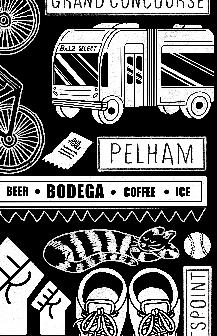
By Sunny Nagpaul

Intricately designed beadwork plastered onto canvas and sculptures made of willow branches, cotton, and soil linger in the halls of the most recent exhibition at the Longwood Art Gallery @ Hostos, which implores viewers to think—truly think—about what it means to shed a version of the world that no longer exists.
For the six participating artists, shedding one identity often makes room for a new one to arise—and that’s what many chose to highlight with their work in the exhibition titled “Black Shedding(s),” a group exhibition that embodies the personal effort of what it takes to shed a world that can no longer be. For this exhibition, artists took a close look at the history of the land they live on—which for many is The Bronx—and how the borough’s continuous transformation is an important part of the culture it sustains.
Reflecting on yourself or the lives of your ancestors, obviously, takes on very different shapes and forms. For Mikailah, who contributed an intricately woven beadwork design on canvas for the exhibition, the journey of self-reflection begins with the ancient beadwork threaded into her Afro-Indigenous ancestry.
Mikailah, who is a member of the Nimîipuu Nation, learned the art of beading at age ten from her grandmother Chloe Halfmoon and recalls seeing intricate beadwork designs and patterns sewed onto clothing worn for special celebrations like powwows. “With beadwork, you always see it on regalia, dresses, hair ties, earrings, moccasins, and so forth,” Mikailah said. The beadwork always looked like art to her, she said, and the goal of her art is to show others her tribe’s traditional clothing designs that are often overlooked. “I wanted to put it in people’s faces that this is an art

form, and our ancestors have been doing this since the 1700s,” she said.
Moving beadwork to canvas, she said, isn’t something traditionally done by people in her tribe. It was a process that involved tediously tacking down one or two beads at a time and creating geometric patterns and choosing colors that are historically meaningful to her tribe.
“The Nimîipuu Wall Canvas” is “an ode to my people, because we used these certain colors and patterns when we started out a tribe, through trade with different settlers and people passing through the land.” The people of her tribe, she said, have historically been located in Oregon, Washington, and Idaho where many of her tribe members remain.
Blue beads, she said, were used to resemble the rivers and the sky; red and black beads signified the tribe’s warriors, while pink and white beads signify neighboring tribes.
“I’ve also been tying in different African designs, blending the two and just speaking through my identity how I choose to see fit,” she said. Her creativity, especially as it pertains to her own identity, has even helped her launch a business.
Mikailah, who has been doing beadwork for the last 20 years, began a collaboration with a blanket company called Eighth Generation, which specializes in native-designed wool blankets, earlier this year, and also runs her own creative agency, Beadwork by Mikailah.
The main goal of her art, she said, is to show people her tribe is “more than just people who survived oppression.”
“We’re more than just survivors, we’re people who are thriving,”
Mikailah said.

Honoring the depth of different identities is one of the main focuses of the show, according to the show’s curator Cheyenne Wyzzard-Jones who acknowledged how The Bronx tends to a borough where many different cultures and journeys intersect.
“This exhibition is in The Bronx, which has historically seen Black and Brown people pushed out,” Wyzzard-Jones described. At the same time “it’s in a community college where Black and brown people come to learn.,” she said.
The exhibition also aims to dispel stereotypes that often precede the borough. “There’s a notion that art doesn’t happen in The Bronx,” Wyzzard-Jones said, “and I really want to say that’s not true.”
Wyzzard-Jones has been an independent curator for the past four years, and believes the exhibition shows how “everyone connects to their land.” That connection is clear for another artist, tasha dougé, who sought to explore that connection in a video piece that depicts herself deconstructing one of her sculptures, titled “Justice.” The intention for the sculpture, which she created from fencing material, cotton, and rebundled braiding hair, was to serve as a reminder “that the United States of America is what it is because of the contribution made by people of African descent.”
“It was our blood, sweat, and tears that cultivated the soil of this rich land,” she wrote in her statement about the piece. For the gallery, however, she decided to reinvent the sculpture further. dougé presented a video installation for the gallery, in which she films herself deconstructing the sculpture, an act she said changed the meaning of her original art.
“In deconstructing my work, as opposed to making it, there’s a level
of vulnerability I’m expressing as an artist and as a person,” she said, adding, “most artists make work for people to be in engagement with, so there isn’t really any concept of destruction.” It was a process she described as “regenerative,” and helped her focus her viewers’ attention on the materials of her sculpture—all of which are powerful symbols of Black America.
The current exhibition at Longwood Art Gallery @ Hostos is open to view on Monday through Thursday from 12:00 PM – 6:00 PM, and admission is free. The exhibition will close on July 10th and a Closing Reception will be held on that day, from 6:00 PM – 8:00 PM. Longwood Art Gallery @ Hostos is located at 450 Grand Concourse, Bronx, NY 10451.
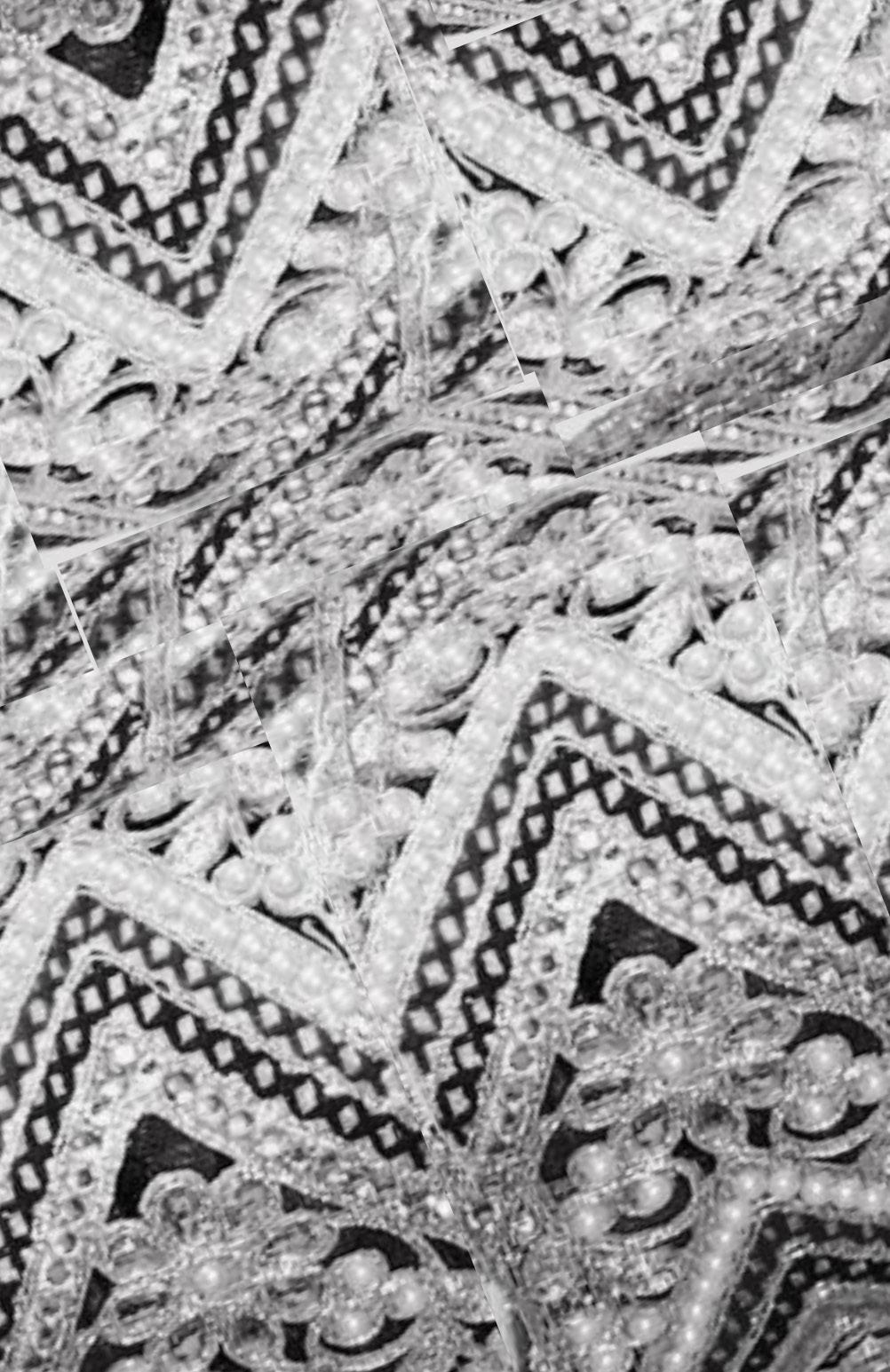
The gallery’s website is found here: https://www.bronxarts.org/ programs/connector/longwood-art-project/longwood-art-gallery
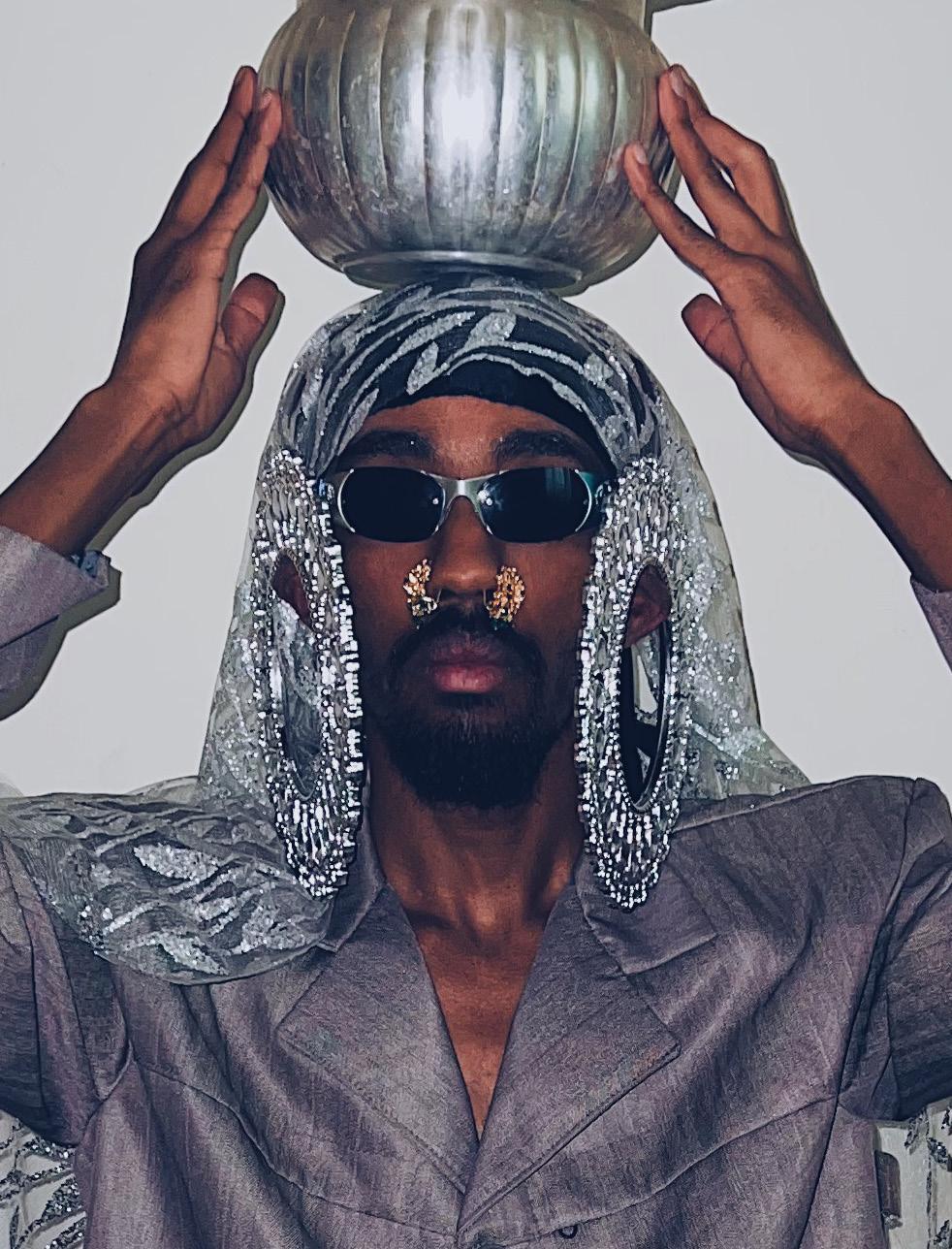
Gouled Ahmed is an Addis Ababa-based Somali visual artist, stylist, costume designer, and director. Their work explores the themes of memory and belonging through the lens of self-portrait photography, self-fashioning, and textile art. Their ongoing self-portrait series Our Earth Will Remember Us Again Someday and One Day These Names Will Be Ours explore the gaps that exist within the formal language in the understanding and contextualization of gender expressions that exist outside of the binary. Gouled’s work deals with the notion of futurity and is heavily aimed at envisioning new and equitable aesthetic futures for the Horn of Africa.
Gouled is a recipient of the African Cultural Fund’s inaugural grant, as well as the Prince Claus Fund’s inaugural Seed Award. In 2021, they collaborated with Bristol-based Somali poet, director, and visual artist Asmaa Jama on Before We Disappear, an interactive moving image piece commissioned by BBC Arts as both a costume designer and model. Gouled also collaborated with Jama as a co-director on the experimental film The Season of Burning Things commissioned by the Bristol Old Vic Theater. The piece was screened last November at the Venice Architecture Biennale in collaboration with the Goethe Institute and Theater Neumarkt’s 100 Ways to Say We program. Most recently, Gouled was also featured in the documentary The Ones Who Keep Walking, a film commissioned by Johnnie Walker, to share the stories of twenty rising creatives and boundary-pushers from the African continent. They are also part of the upcoming group exhibition at the V&A Museum entitled Africa Fashion.
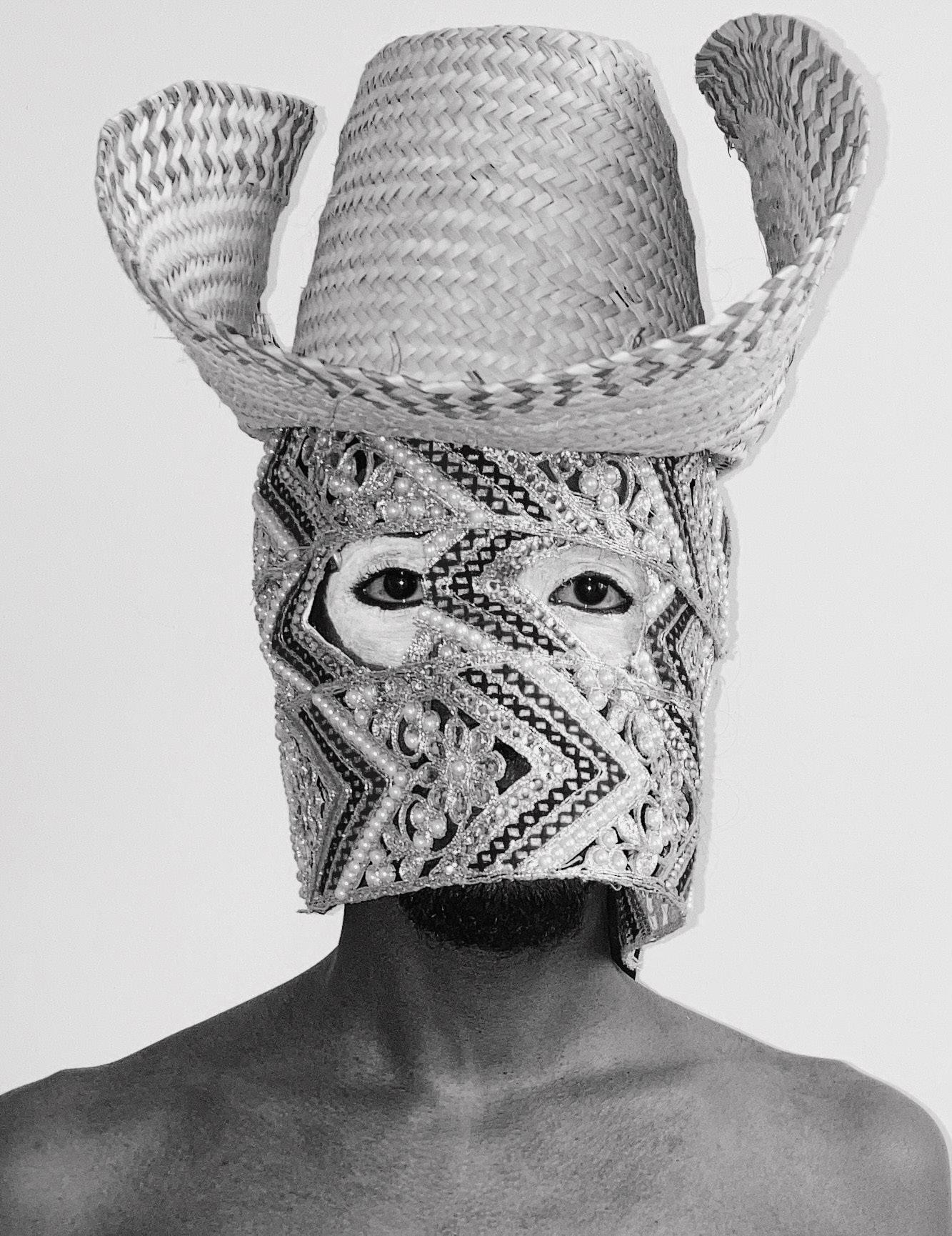

Working from a Global African Diasporic, AfroCentric, and Afro-Futurist perspective, Nikesha Breeze’s interdisciplinary work reimagines inter-generational traumatic inheritance through the intersection of art and ritual. Nikesha’s work centers Black, Brown, Indigenous, Queer, and Earth bodies existing within realms of past, present, and future. Nikesha uses performance art, film, painting, textiles, sculpture, and site-specific engagement to create otherworldly spaces centered on African Diasporic reclamation and honoring. Nikesha’s methodologies call upon ancestral memory and archival resurrection to bring forward the faces, bodies, stories, and spirits that have been systematically erased from the master narrative. Their performance art and film work reimagines relationships with the body, the invisible world, and the social space.
Originally from Portland, Oregon, Nikesha Breeze lives and works in the high desert of Taos, New Mexico, on the unceded land of the Taos Pueblo People. Nikesha is an African American descendant of the Mende People of Sierra Leone and Assyrian American Immigrants from Iran. Nikesha has shown work both nationally and internationally, featured in the MOCADA Museum of Contemporary African Diaspora Arts Brooklyn, The Albuquerque Museum, The University Art Museum, Portland Art Museum, Nkyinkyim Museum of Ghana, and various galleries and art fairs across the globe.
In 2021, Nikesha’s 5,000 square foot solo exhibition FOUR SITES OF RETURN, gained national acclaim and was featured in American Art Collector, Hyperallergic, Metalsmith Magazine, and The New York Times. Nikesha was awarded national recognition at the 2018 International ARTPRIZE exhibition, winning the juried 3D Grand Prize Award as well as the Contemporary Black Arts Award, for their sculptural installation: 108 Death Masks: A Communal Prayer for Peace and Justice. In 2021, Nikesha won the National Performance Network Creative Fund and Development Fund grant for their collaborative work, Stages of Tectonic Blackness. In 2024, Nikesha will unveil a large-scale public installation that will be added to the Equal Justice Initiative’s permanent collection and national archive at The Legacy Museum in Alabama.
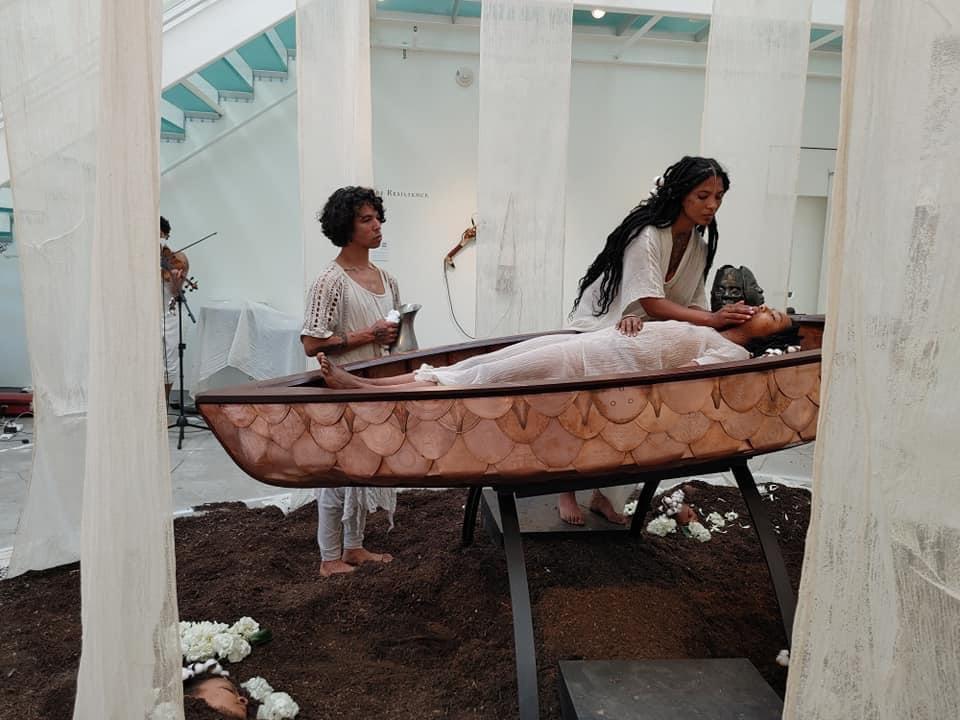
Nikesha Breeze, Re:turn/Re:Member, 2021, Single channel, video color, 26 min.

tasha dougé is a Bronx-based, Haitian-infused artivist and cultural vigilante. Her body of work activates conversations around women, advocacy, sex, education, societal norms, identity, and Black pride. Through conceptual art, teaching, and performance, dougé devotedly strives to evoke empowerment for women and illuminate the contributions of Black people, declaring that her “voice is the first tool within my art arsenal.”
She has been featured in The New York Times, Essence, and Sugarcane Magazine. She has shown nationally at RISD Museum, The Apollo Theater, and Rush Arts Gallery. Internationally, dougé has shown at the Hygiene Museum in Germany. She is an alum of the Laundromat Project’s Create Change Fellowship, The Studio Museum of Harlem’s Museum Education Program, Haiti Cultural Exchange’s Lakou Nou residency, and the Caribbean Cultural Center African Diaspora Institute’s Innovative Cultural Advocacy Program and their inaugural Digital Emerging Artist Retreat.

tasha dougé, This Land is HER Land too, 2024, braiding hair (organic), chicken wire, cotton, 3 x 5 feet
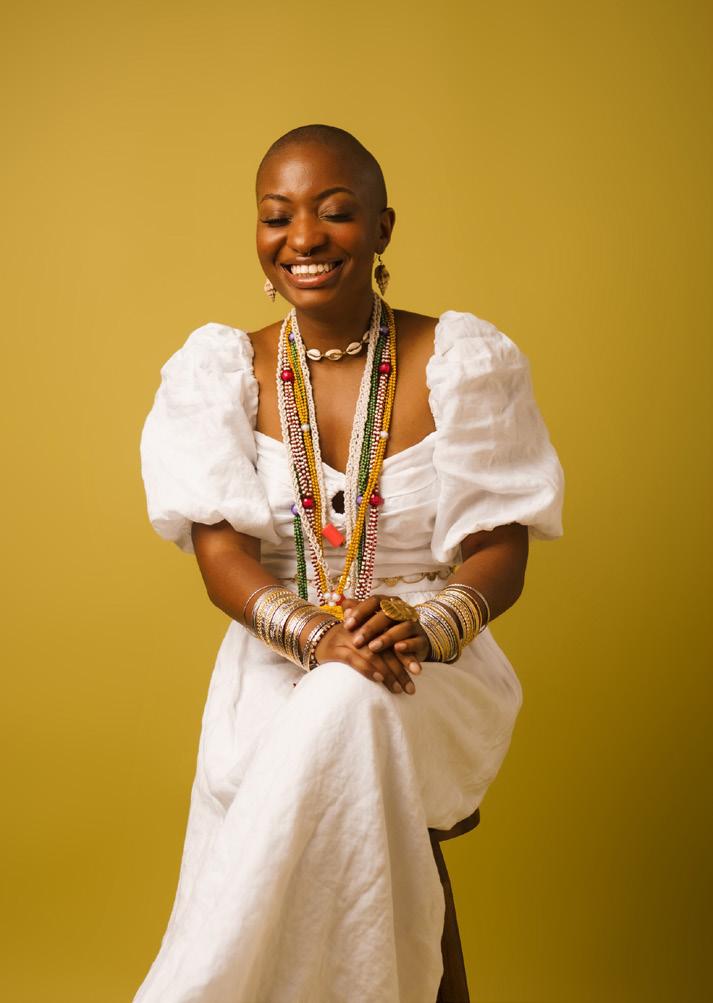
Ehime Ora creates captivating content that heals, elevates, and inspires the soul.
Ehime Ora is grounded in her purpose of reconnecting others back to themselves as an educator of African spirituality and holistic wellness. Through her creations, she facilitates tangible joy and spiritual wellbeing within her communities. Ehime Ora is titled Iyanifa (Ifa HighPriestess), Iya Sango (Sango Priestess), and Iya Erinle (Erinle Priestess). Ehime Ora is a part of the LGBTQ+, ADHD, and Autism communities. With neurodivergence in mind, Ehime Ora strives to make spirituality more accessible, accommodating, and safe for everyone. Ehime Ora shares a proud heritage of being Edo and Urhobo, while simultaneously being born in Yorubaland—Ibadan, Nigeria. Iya Ehime Ora is currently located in New York, New York.
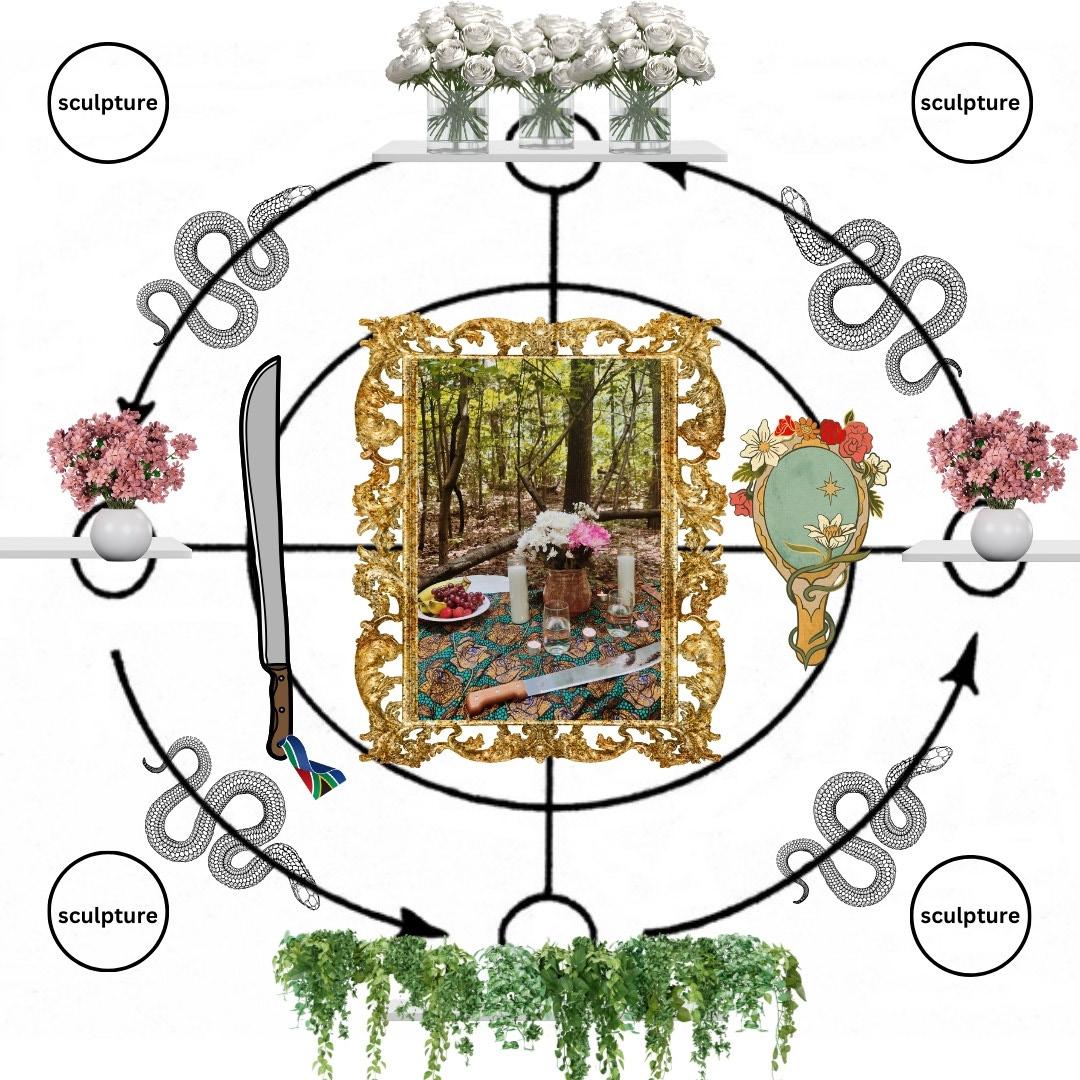
Ehime Ora, Point of Return, 2024, Ceramic head and vase, brass
Osun Ada sword, machete, hand-held mirror, paint, pigment and aged flowers, video: 42 sec., 42 X 54 inches
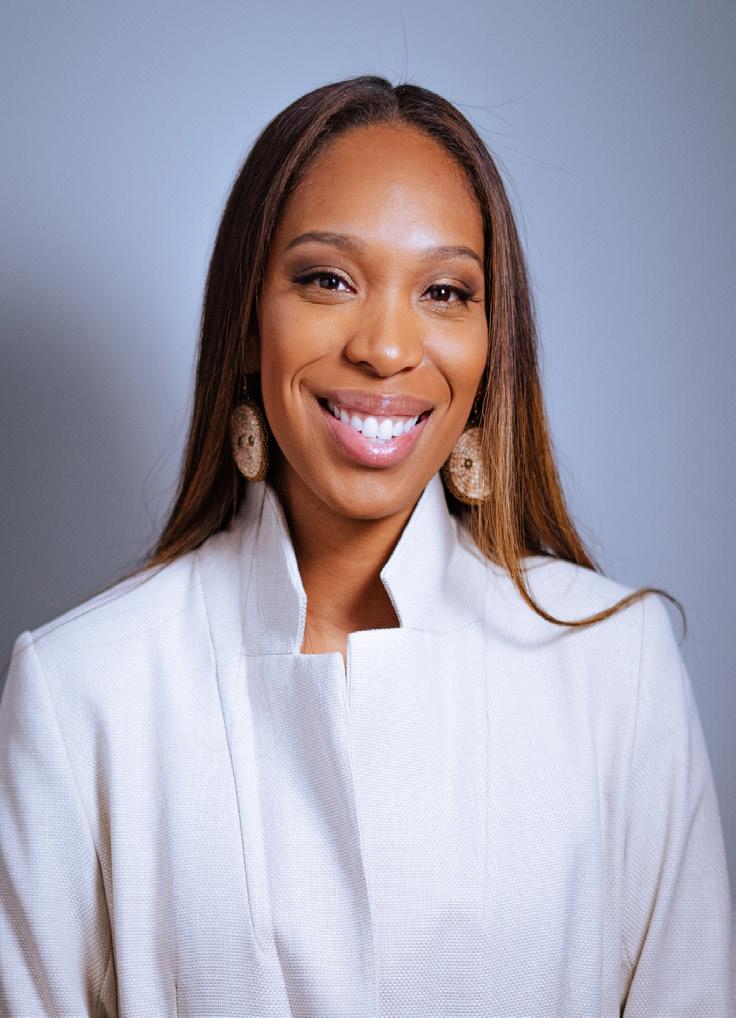
Mikailah is a Nimîipuu tribal member currently residing in the Washington, D.C. area. Mikailah graduated from Lewis-Clark State College with a degree in Business and Communications, minoring in Nez Perce Language, Leadership, and Marketing.
Makailah is the owner of Beadwork by Mikailah, LLC and Indigenous Creatives, LLC as well as the host of Quantum Theory Podcast. Her work has been affiliated with brands and organizations such as SWAIA’s Santa Fe Indian Market, Native Art Magazine, Oregon Native American Chamber, First American Art Magazine, Inter-American Foundation, Potlatch Fund, First Peoples Fund, the Josephy Center for Arts and Culture, and others.
What drives Mikailah’s work ethic is her determination to make a difference for her people. She has been acknowledged for her speeches touching on race in rural communities, financial literacy, mental health, and entrepreneurism.
Mikailah has no plans to stop achieving her goal of opening new doors and breaking the barriers needed to create change, opportunity, and equality for people of color. Passion, perseverance, and innovation are a few words to describe Mikailah and this can be seen through the details she carefully includes in each of her endeavors.
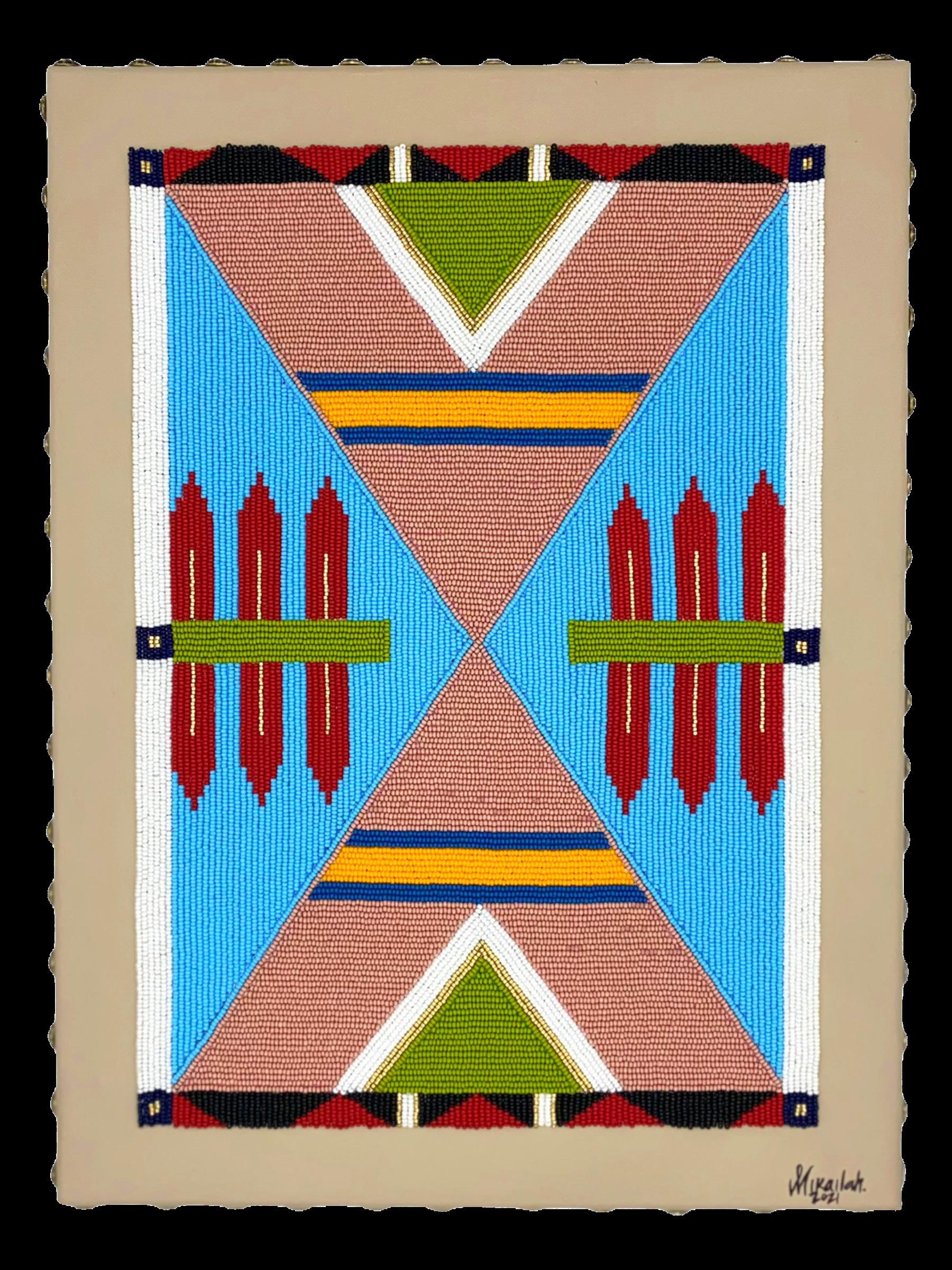
Mikailah, The Nimîipuu Wall Canvas, 2021, Seed beads, Toho beads, brass studs, acrylic paint, and wall canvas, 16 x 12 x 0.5 inches

Jaleeca Yancy (b. 1990) is a multi-disciplinary artist from Memphis, Tennessee based in New York City. Her abstract paintings and mixedmedia works delve into themes of black culture, radical imagination, and sustainability. Through experimentation with natural pigments, foraged botanicals, and upcycled materials, Yancy creates immersive worlds that transcend time and space.
Her art weaves together ancestral craft skills, gestural expressions, and illustration, resulting in vibrant color palettes, whimsical forms, and intricate textures. She draws inspiration from folklore, southern cooking, Hip-Hop, and spirituality. Her compositions explore storytelling, femininity, and environmental justice while inviting viewers into narratives of boundless possibilities.
Yancy draws inspiration from the creative legacies of artists like Faith Ringgold, Sam Gilliam, and Wangechi Mutu.

Jaleeca Yancy, Pigment Series installation, Pigment 1 & 2, 2022, Indigo on canvas, indigo and turmeric on canvas, Secret Garden, 2024, indigo on synthetic leather backing, variable dimensions
All works courtesy of the artists unless otherwise noted.


Gouled Ahmed
Salt Water Bodies, 2021 - 2022
Digital Print, 18 x 24 inches
Gouled Ahmed
Caged Wind, 2021 - 2022
Digital Print, 18 x 24 inches


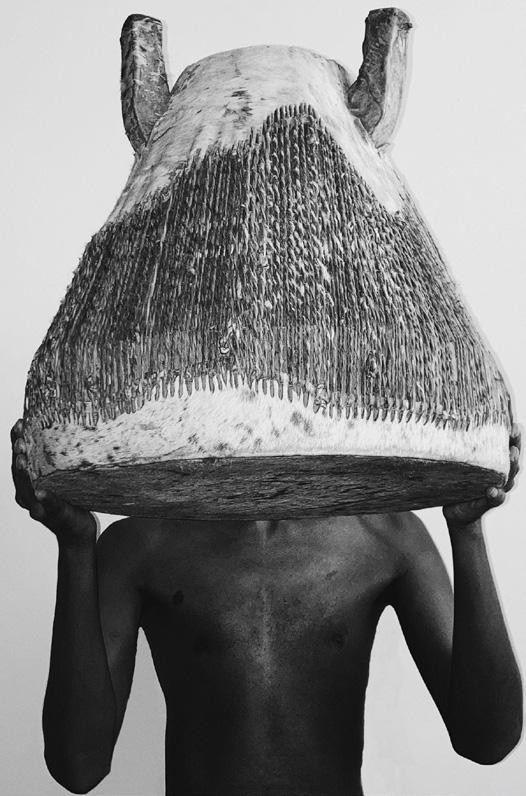
Gouled Ahmed
Veiled Hope, 2021 - 2022
Digital Print, 18 x 24 inches
Gouled Ahmed
Together, We Fled A Realm, 2021 - 2022
Digital Print, 18 x 24 inches
Gouled Ahmed
The Weight We Carry Within, 2021 - 2022
Digital Print, 18 x 24 inches



Gouled Ahmed
Ode to the Old Land, 2021 - 2022
Digital Print, 18 x 24 inches
Gouled Ahmed
Other Worlds, 2021 - 2022
Digital Print, 18 x 24 inches
Nikesha Breeze
Re:turn/Re:Member, 2021
Single channel, video color
26 min.

Nikesha Breeze
Selections from 108 Death Masks, 2018
Hand sculpted ceramic, red iron oxide, cobalt
Variable dimensions

Nikesha Breeze
Land Effigy, 2024
Cold cast bronze, cotton, seeds, salt, horn, antler, bone, time, prayer, patience 63 X 48 X 48 inches

tasha dougé
This Land is HER Land too, 2024
Braiding hair (organic), chicken wire, cotton 3 x 5 feet by 1 inch



tasha dougé
Molting…, 2024
Garbage tarp, chicken wire, residual braids, and video
5 min
5 X 2 X 1 feet
Ehime Ora
Point of Return, 2024
Ceramic head and vase, brass Osun
Ada sword, machete, hand-held mirror, paint, pigment and aged flowers
Video: 42 sec., 42 X 54 inches
Ehime Ora
A Place for Us, 2024
Pampas grass, faux baby’s breath, glass, vases, water, white ceramic vases, faux tea light, wooden Benin sculpture, wooden Erinle sculpture, sticky notes, ball point pen
Variable dimensions
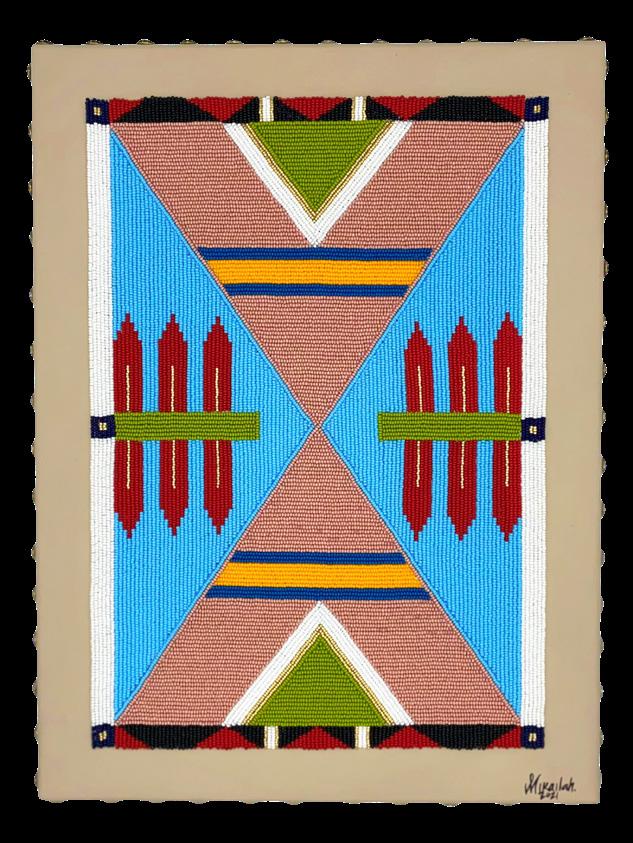
Mikailah
The Nimîipuu Wall Canvas, 2021
Seed beads, toho beads, brass studs, acrylic paint, and wall canvas
16 x 12 x 0.5 inches
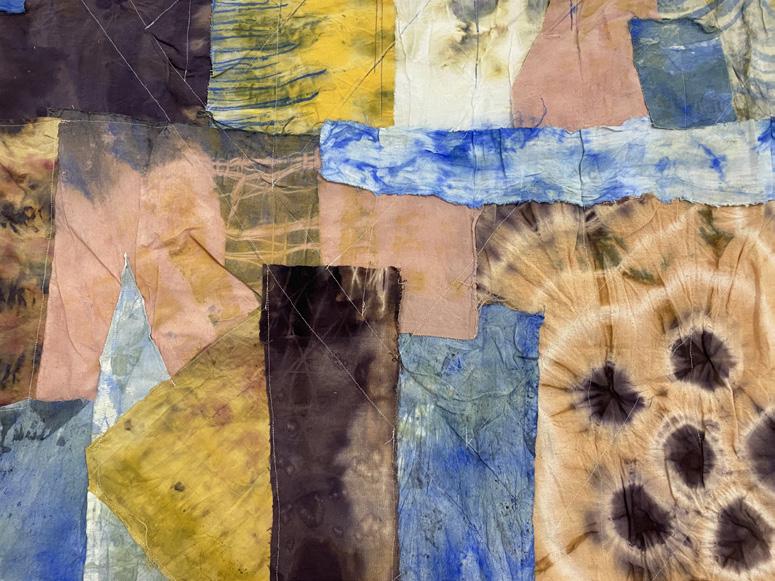
Jaleeca Yancy
Pigment Series Installation:
Pigemnt 1 & 2, 2022
Indigo on canvas, indigo and turmeric on canvas
Secret Garden, 2024
Indigo on synthetic leather backing
Variable dimensions

The Bronx Council on the Arts is supported, in part, by public funds from the New York City Department of Cultural Affairs (DCLA) in partnership with the City Council; the New York State Council on the Arts (NYSCA) with the support of the Office of the Governor and the New York State Legislature; Arts Midwest and the National Endowment for the Arts; the Coalition of Theaters of Color; the Cultural Immigrant Initiative; Bronx Borough President Vanessa L. Gibson; City Council Members Eric Dinowitz, Pierina Ana Sánchez, and Marjorie Velázquez; and NYS Assemblymember Michael Benedetto and the NYS Division of Criminal Justice Services. Also supported in part by the Howard Gilman Foundation, the Booth Ferris Foundation, the Altman Foundation, the Mertz Gilmore Foundation, Amazon, the Lily Auchincloss Foundation, the Tiger Baron Foundation, the Claire and Theodore Morse Foundation, the New Yankee Stadium Com-munity Benefits Fund, the Northwestern Mutual Foundation, and Con Edison. Special thanks to Hostos Community College and the Hostos Center for the Arts & Culture for their support.
Bronx Council on the Arts
2700 E Tremont Ave Bronx, New York, 10461 www.bronxarts.org @BronxArtsOrg





